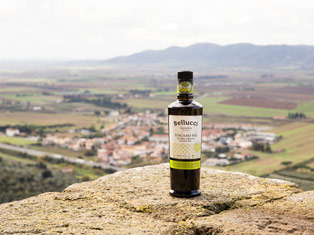Light, Pure, or Extra Virgin? Olive Oil Grades (and Their Meaning)
Not all olive oils are created equal.

With so many types to choose from on grocery store shelves — extra virgin, virgin, pure, light, extra light — the differences can be confusing. Contrary to other food categories, “light” and “extra light” don’t have fewer calories, nor is “pure” more nutritionally sound when it comes to olive oil. These designations are, in fact, clearly defined grades that a health-conscious shopper needs to navigate around.
Each grade is determined by objective factors, such as the method of production, the use of chemical refinement or processing, and the presence or level of certain compounds within the finished oils.
We’ve outlined the most common olive oil grades (as defined by International Olive Counsel guidelines) here, in order to help you make an informed (and delicious!) decision.
- Extra Virgin Olive Oil. Also known as pure EVOO, extra virgin olive oil is the finest olive oil grade. Oils marked “extra virgin” are expected to pass a rigorous set of standards for quality. These oils are the freshest and best tasting, since they originate from the initial press - and they’ll have the highest levels of health-giving polyphenols, because they have been produced without the use of heat. They also have oleic acid levels of not more than 0.8 grams per 100 grams, and must be verified as free of defects.
- Virgin Olive Oil. Virgin olive oil is the next olive oil grade. Produced using the same methods as extra virgin olive oil, virgin olive oil is simply deemed to be of lower quality. It has oleic acid levels of no more than 2.0 grams per 100 grams and may contain a median of defects equal to or under 2.5 (rancid, fermented, musty, or moldy flavors are most common, though there are other impurities). Virgin olive oil is fit for consumption without further processing — it’s just not as flavorful as EVOO and its nutritional value degrades faster.
- Pure Olive Oil, Light Olive Oil, and Extra Light Olive Oil. These are olive oils that are the products of lower-quality (or older harvest) olives, and they have been refined through the use of heat, solvents, or chemicals. Methods of refinement may include degumming, filtration, neutralization, deodorization, and/or bleaching, amongst others. The refining process strips the olive oil of most of its defective flavors and natural health-giving properties and antioxidants. It may also produce trans fats, which are known to be detrimental to health. However, because the stripping of the defective flavors leaves a neutral flavor profile, these oils can be useful in cooking and where a higher smoke point is needed.
- Olive Pomace Oils. Olive Pomace Oils are produced from the pomace pastes leftover from production of EVOO. These pastes are treated with solvents to extract additional oils, which are intended for refinement. Unrefined Olive Pomace Oils are not considered fit for human consumption, and in many countries, even Refined Olive Pomace Oils must be specially labelled prior to marketing to consumers. In order to meet standards for human consumption, many are blended with other lower-quality, refined olive oils. Olive pomace oils can be useful in seasoning pans and in making beauty products, such as soap and skin cream.
There are, of course, other clues that can help you determine the quality of your preferred olive oil, including the display of PGI or PDO designations, indication of harvest date, USDA Organic certification, or other clear indications of traceability, transparency, and freshness. But knowing the basic grades of olive oil is an excellent place to start, so you can choose the best and healthiest option for you and your family.
Interested in discovering what makes pure EVOO taste so great? Pour more, here!





